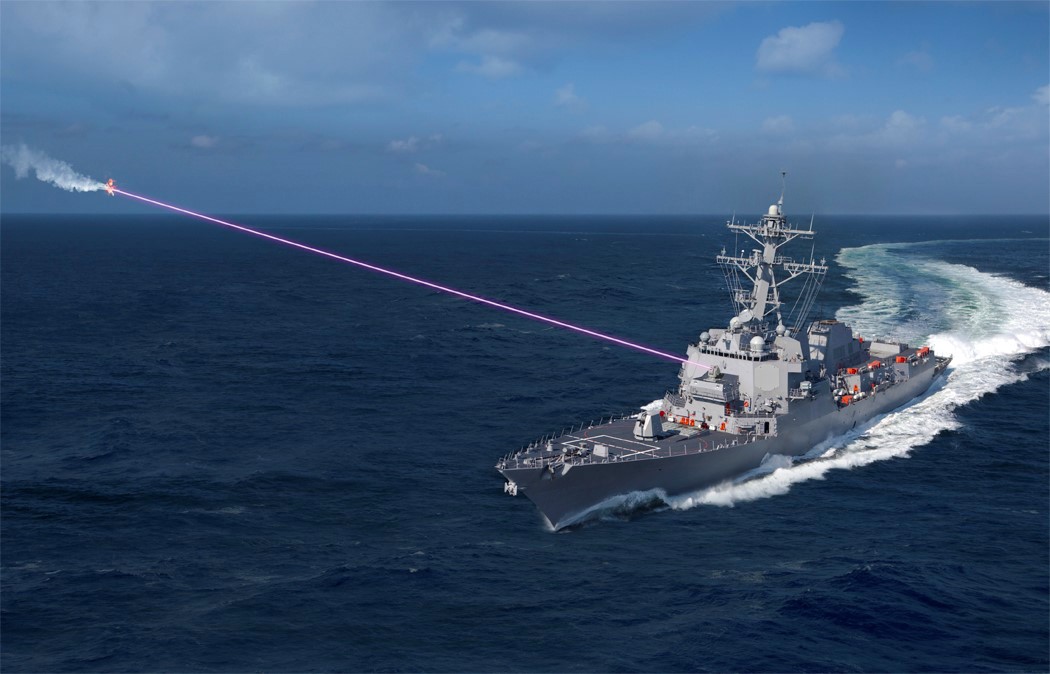The U.S. Navy has settled on the topline requirements for its future DDG(X) destroyer surface combat ships. Those requirements will include larger missile launchers, increased weapons capacity, the ability to deliver long-range hypersonic weapon strikes, an increase in the amount of directed energy weapons onboard, and greater use of sensor technology such as Raytheon’s SPY-6, an active electronically scanned array 3-D radar. Stew Magnuson writes (abridged):
The Navy has settled on the topline requirements for its future DDG(X) surface combatant, a senior service official said Jan. 11.
The program was established in 2021 and is envisioned as a follow-on to the Arleigh Burke-class DDG-51 destroyer. The Guided Missile Destroyer Program Office (PMS 460) has spent the past 12 months working on preliminary designs, according to the Navy.
“I think we have a good sight picture of the DDG(X) top level requirements. They have been endorsed,” Rear Adm. Fred Pyle, the Navy’s director of surface warfare, said during a panel at the Surface Navy Association’s annual conference in Arlington, Virginia.
The Navy envisions the ship being ready in the 2030s, just in time for it to host a series of next-generation weapons that are still under development.
“I think the imperative of the DDG(X) is the warfighting imperative,” Pyle said. “It’s going to bring us the opportunity to use larger missile launchers. It’s going to bring us the opportunity to use more higher power lasers and long-range strike hypersonic weapons — as well as sensor growth — as we go into the future.”
One of those sensors is the SPY-6 radar, built by Raytheon, that is currently being integrated on Navy ships. The powerful sensor will inevitably be improved upon, but may require more power by the 2030s, Pyle said.
As for directed energy weapons, the Navy has now received six high-energy lasers with integrated optical-dazzler and surveillance, or HELIOS, systems from its maker Lockheed Martin. They are now being integrated onto ships, said Rear Adm. Seiko Okano, program executive officer for integrated warfare systems.
Pyle said systems such as HELIOS are now mainly tasked for self-defense, but that will evolve to offense.
“We’re going to continue to invest with directed energy to get to those higher levels so we can move beyond self-defense and get into more warfighting missions,” he said.
The DDG(X) is expected to provide more on-board energy to provide the needed energy for more powerful radars or lasers, he added.
“Shipbuilding is a long game, right? So when we achieve the directed energy power that we’re looking for, or high power microwaves — or whatever that may be — or lasers, we want to have a platform to land it on,” Pyle said.
Missiles will also inevitably become larger, Pyle said.
The new Standard Missile-6, or SM-6, which can do anti-air defense, ballistic missile defense and anti-surface warfare, is being integrated onto Navy ships now, Okano said.
“The so what behind DDG(X) is that capability to deliver larger missile launchers, so we can have a stick that beats that of our adversaries. I think that’s a key element,” Pyle said.
Pyle also mentioned hypersonic missiles as another weapon the DDG(X) could host. The Navy is currently developing the Conventional Prompt Strike weapon, which would travel at speeds higher than Mach 5 and be maneuverable.
Service officials have stated that they want the new weapon to be ready by 2028, a few years before the DDG(X) is fielded. They have tapped Zumwalt-class destroyers and Virginia-class submarines as the first destinations for the hypersonic technology.
Steve Schneider
Latest posts by Steve Schneider (see all)
- New Chinese Electromagnetic Surveillance Leaves “Nowhere to Hide” on Battlefield - March 15, 2024
- Amazon’s Nuclear Powered Data Center - March 7, 2024
- Skunk Works Rolls Out An Engineering Marvel - March 6, 2024
- Future of Airpower Takes First Flight - March 4, 2024
- A War Beneath the Waves – Trillions of Dollars at Stake - February 9, 2024
















